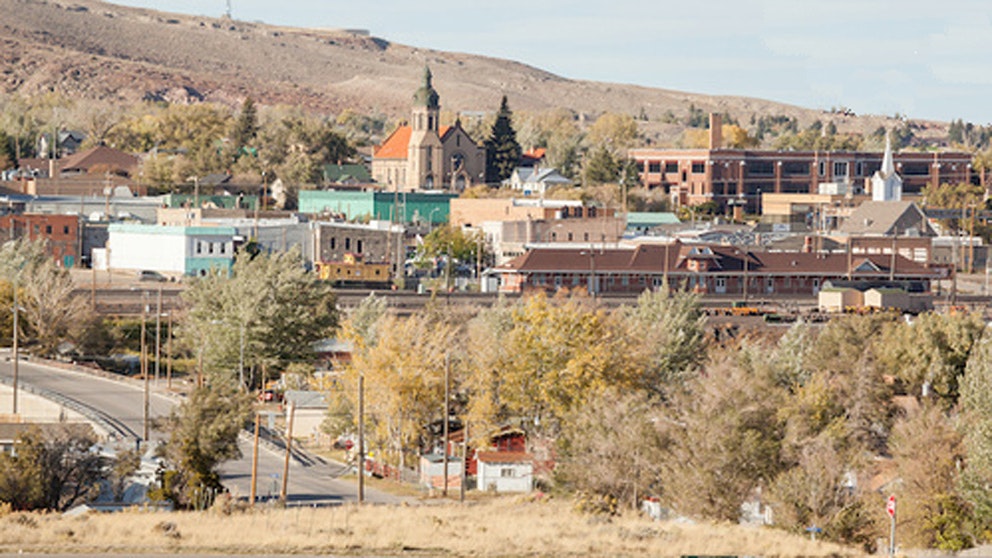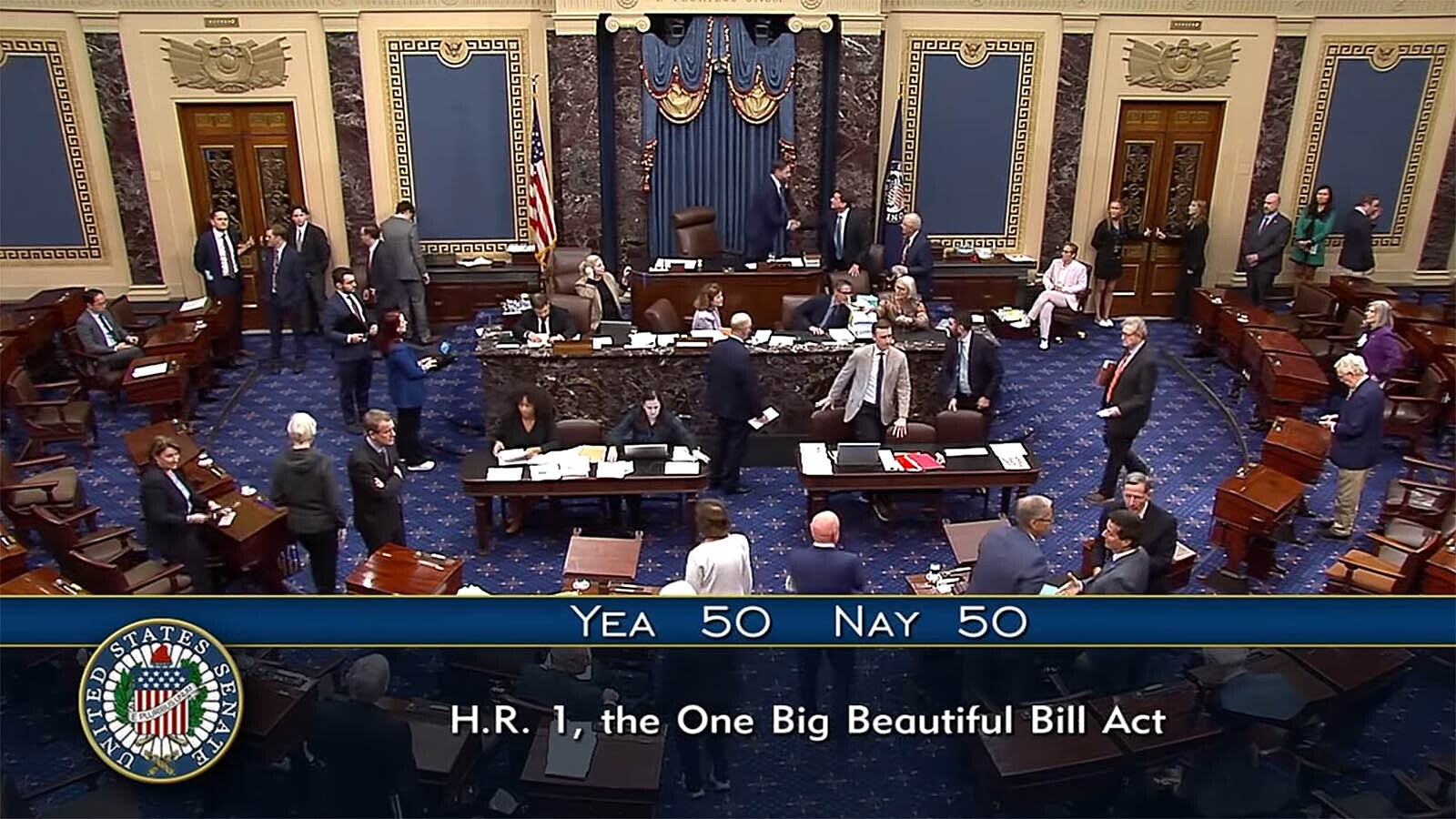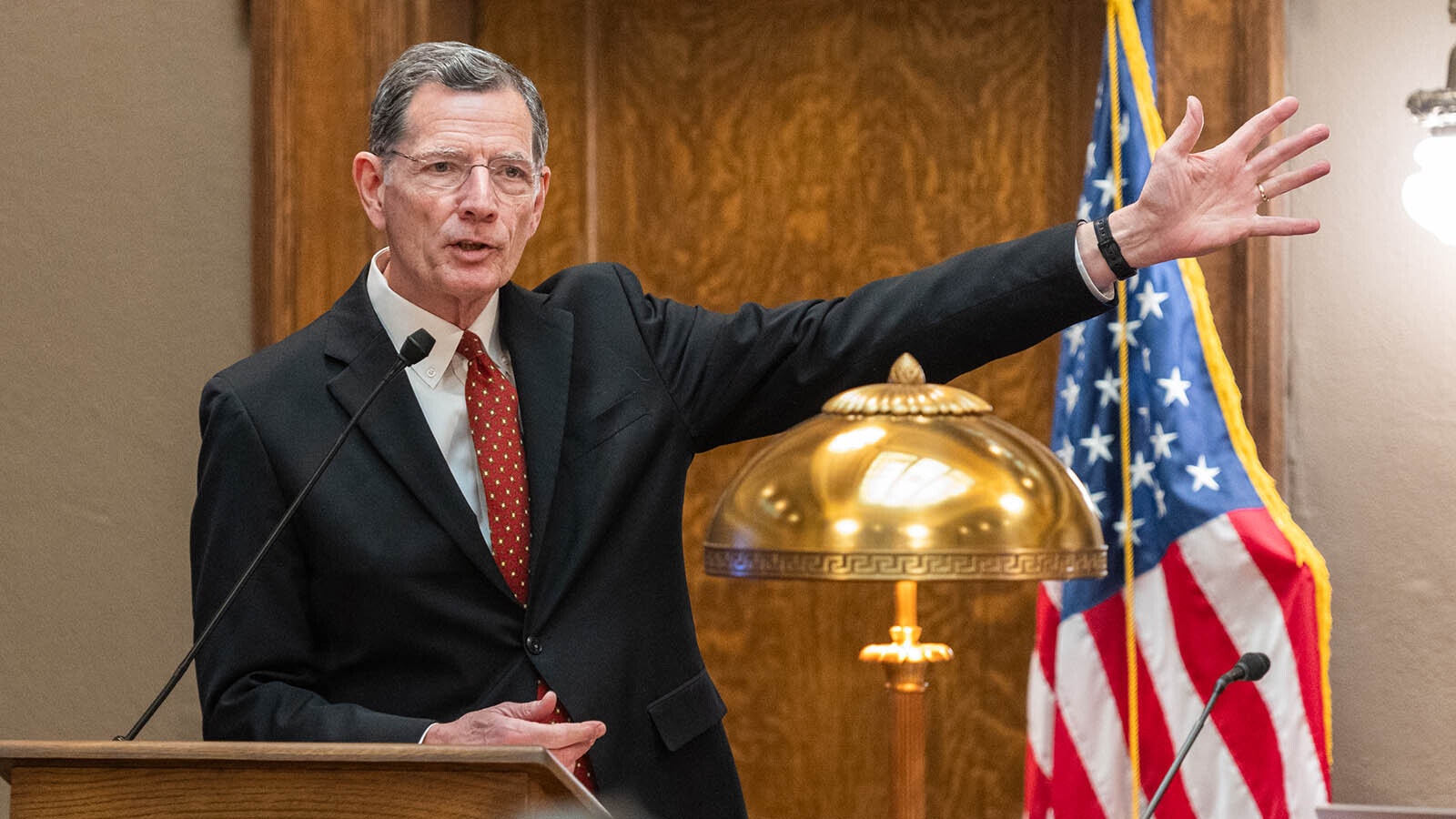By Leo Wolfson, State Politics Reporter
Leo@Cowboystatedaily.com
Despite a catastrophic water failure and facing $20 million in critical infrastructure improvements, a $7 million request from the city of Rawlins was not among the 19 water and sewer projects selected by the State Land and Investments Board to receive a piece of $50 million in American Rescue Plan Act money earmarked for critical sewer and water projects.
The failure of the Rawlins water system in March left the city and town of Sinclair without potable water nearly a week and will take millions of dollars and three to five years to fix, according to a city analysis of the situation. Residents were under a boil water order for five days and the city has since identified extensive critical water infrastructure needs.
Since the initial failure, city residents have been under strict water restrictions and face a 50% hike in their water rates.
While the Rawlins request was denied, Saratoga, another Carbon County town with a population of 1,727, was determined to have the highest need of all applicants, receiving $966,268 for its water line replacement.
“This is a big win for us,” Creed James, mayor of Saratoga, told Cowboy State Daily on Thursday afternoon. “We have a lot of aging infrastructure that needs to be replaced.”
The town of Saratoga only has about $6 million in its total annual budget, of which about $900,000 is devoted to its water and sewer department.
Although the project was originally estimated to cost about $1.3 million in 2019, when a new bid came back for the project to replace a section of water line this year, the cost had risen to well more than $2 million, James said.
“With the rising cost of inflation, it can be tough to see the light at the end of the tunnel these days,” James said.
Many cities, towns and counties were granted money for at least one of the projects they applied for through the Water and Sewer Program approved during the 2022 State Legislature, but some weren’t so lucky.
None of the projects applied for within the Cheyenne area were accepted. Every project applied for by the Green River/Rock Springs/Sweetwater County Joint Powers Water Board or the Rock Springs/Sweetwater County Airport Board also were rejected.
The Criteria
The Office of State Lands and Investments used a multi-faceted scoring system to prioritize the needs of the 113 project applications. Only 19 were selected for a piece of the $50 million in infrastructure money. Each grant is conditioned upon an applicant matching anywhere from 15% to 85% of a project’s cost.
Applicants received higher scores if a community is smaller and if they could supply a greater proportion of matching funds on their projects. Saratoga was likely given a high priority for its project because the work is already designed and shovel-ready, and because the community is providing a 50% match.
Mary Crosby, grant proposal writer for Lincoln County, said communities that had project costs rise specifically because of inflation and those that had already begun also were given a priority.
Need Not Only Factor
“I’m not critical of the prioritization process, but some of it has very little to do with the communities’ actual needs,” Crosby said.
Crosby didn’t fault the OSLI staff for making the decisions they did, but said she was disappointed to see both of the projects proposed by the Kemmerer-Diamondville Water & Wastewater Joint Powers Board rejected.
“The Kemmerer area desperately needs this funding if it’s not going to embarrass the entire state of Wyoming for the project with TerraPower,” she said, referring to the proposed advanced nuclear reactor project planned in Kemmerer.
She said the prioritization guidelines were made based on the most urgent needs in relation to COVID-19, but not necessarily the most urgent sewer and water needs affecting the communities moving forward.
She mentioned how certain communities like Bedford, a 97-person town with a large amount of seasonal residents, likely saw its sewer and water revenues increase because its transient population spent more time in the community because of the pandemic. Communities were given a higher prioritization if their revenues decreased under the ARPA funding guidelines.
Wins And Losses
Water also has been an issue at the Southwest Regional Airport in Rock Springs. Devon Brubaker, airport director, told Cowboy State Daily on Thursday, SRA is the only commercial airport in the lower 48 of the United States to truck in all of its water from off-site.
“When you consider the 80,000 to 100,000 people who utilize the airport, where does that put us in terms of providing water for that size of that municipality if they’re all residents who are users of the airport?” Brubaker questioned, mentioning how it is the only commercial airport in the region that extends to Northeast Utah.
Although he said it was disappointing to not be chosen for the $591,639 water and sewer project that would have also cleared up some issues with the Environmental Protection Agency, Brubaker said he was grateful the airport was considered, and that the rejection won’t lead to its demise.
The airport also is working on a $50 million pipeline project that will funnel water directly from Rock Springs to the airfield.
Cheyenne Mayor Patrick Collins said he was disappointed none of the four projects proposed in his city were chosen.
“I know they have limited dollars and limited opportunities but it is disappointing they decided to leave the Capitol city out,” he said. “Cheyenne is an area of growth within the city and I figured they wouldn’t leave us out, but I understand these things.”
The city of Sheridan was a little more successful with its applications, approved for one of the three it submitted. SLIB OK’d $2.8 million for that water project.
“Obviously, we would’ve liked to get the entire set of applications on this go-around, but we didn’t hold out a lot of hope that would happen,” City Administrator Stuart McRae told Cowboy State Daily. “We got most of what we asked for, it’s not a show-stopper.”
McRae said although his community weathered the pandemic without too many issues, he knew of many smaller communities that weren’t so lucky.
“Some places were completely under water,” he said. “Some were hit harder than others.”
Both Brubaker and McRae are optimistic they will be chosen for a second attempt at the grant money.
Future Funding
State Rep. Evan Simpson, R-Afton, wants the Legislature to recycle the same ARPA bill used for sewer and water projects from last year and give out more money next fall.
“Not only do we have a quarter billion dollars’ worth of applications, there is over five times the amount of need in our communities that simply did not make the list and get applications,” he said during the Joint Select Water and Water Development Commission meeting on Wednesday afternoon.
Simpson is recommending that the top 18-20 communities not chosen for this year’s water and sewer ARPA funding have their requests accepted for a smaller pot of $24.7 million in federal funds. Because of inflation, Sen. Larry Hicks, R-Baggs, who chairs the commission, recommended raising that to $35 million.
“I’d be a little hesitant to get so high that all the governor’s and everyone else’s ideas ends up killing the project’s funds because everyone else gets greedy,” Simpson countered.
The commission unanimously approved renewing the ARPA infrastructure bill for this year’s upcoming legislature at the $35 million level.
The water and sewer funds would be allocated in October 2023 with construction not to begin on any projects until 2024.
McRae said although there are philosophical questions that could be asked about the need for the $350 billion ARPA program and that “our great-great-grandchildren will be paying for it,” he believes local governments have done well stewarding the money.
“Was this the best use of our federal funds? That’s more of a philosophical question,” he said. “Across the state they’ve been trying to proportionally distribute the money.”
The state still has $71 million set aside to deal with any future COVID-19 issues that may stem from new variants.
“In case we need to put that back into the economy,” Simpson said.
Gov. Mark Gordon also has an additional $54 million to use at his discretion for future emergencies.
“Very little of that has been spent as no emergencies has arisen as a result of the pandemic,” Simpson said.
There is about $125 million in ARPA funds still remaining for Wyoming to use.





